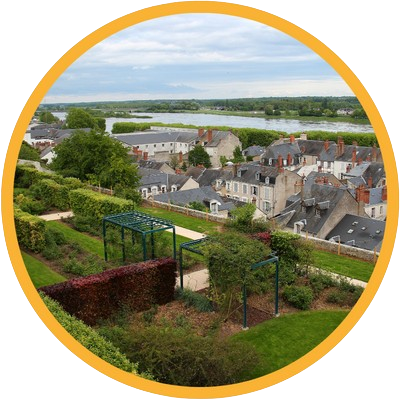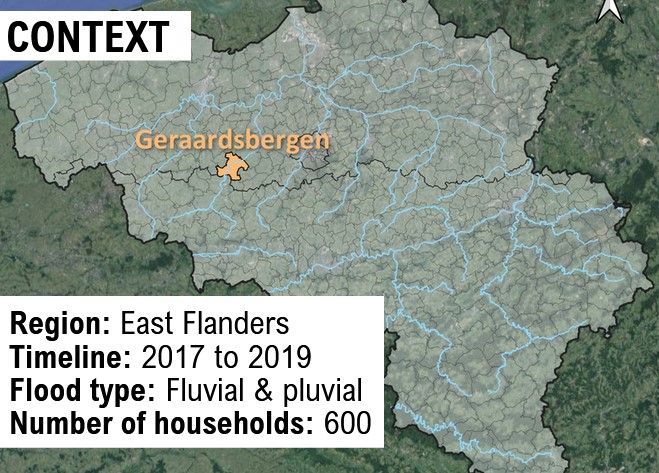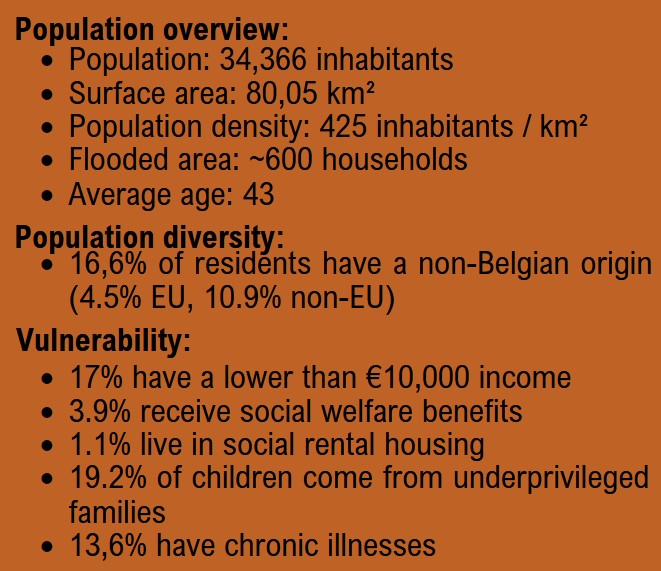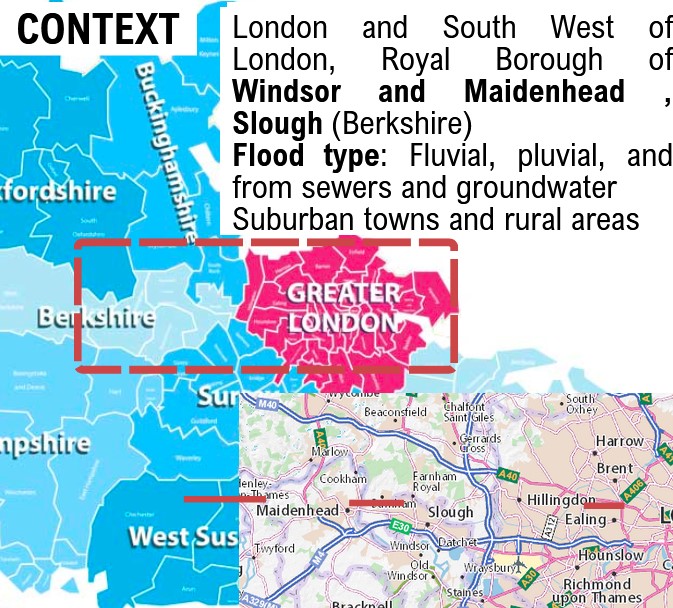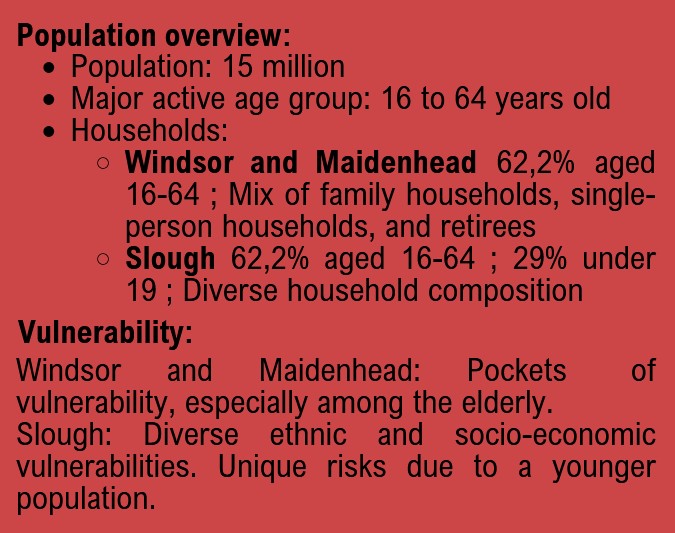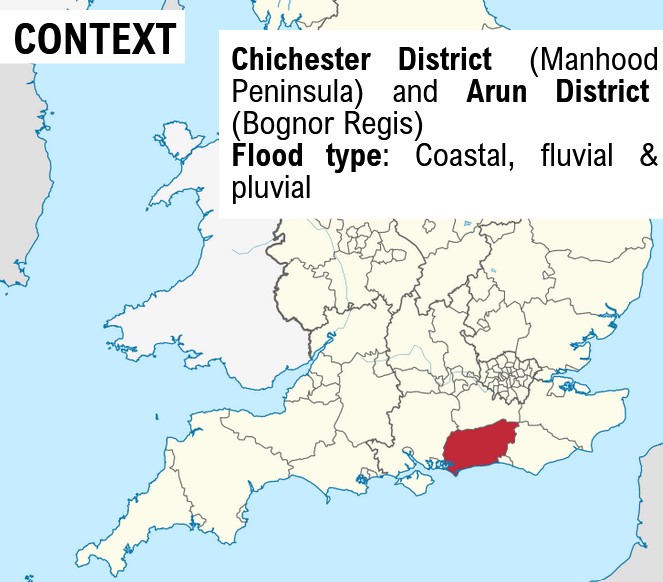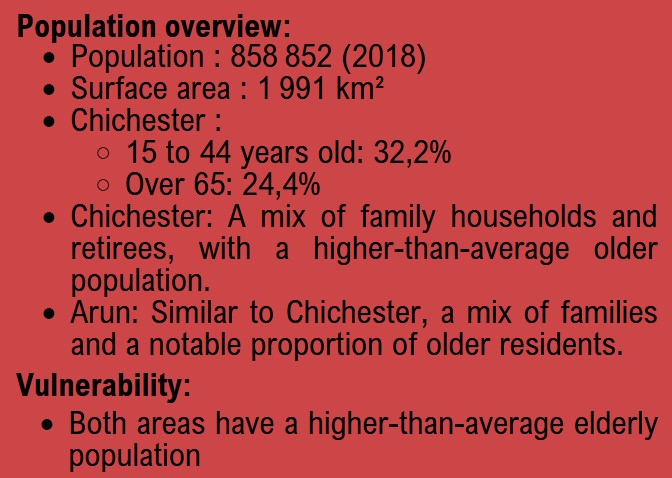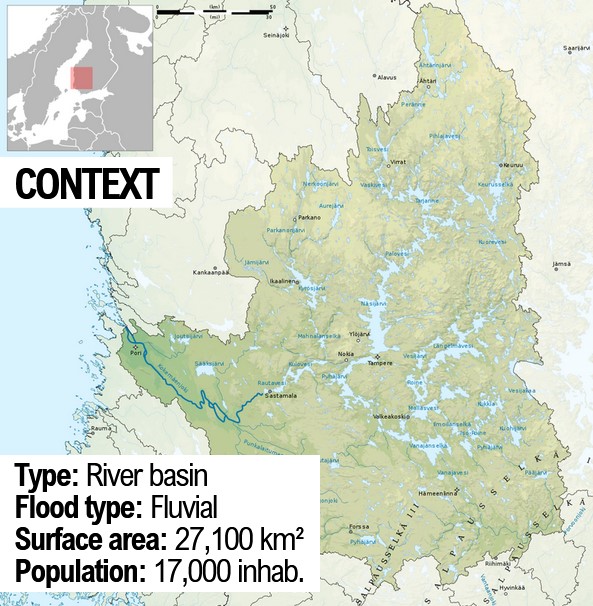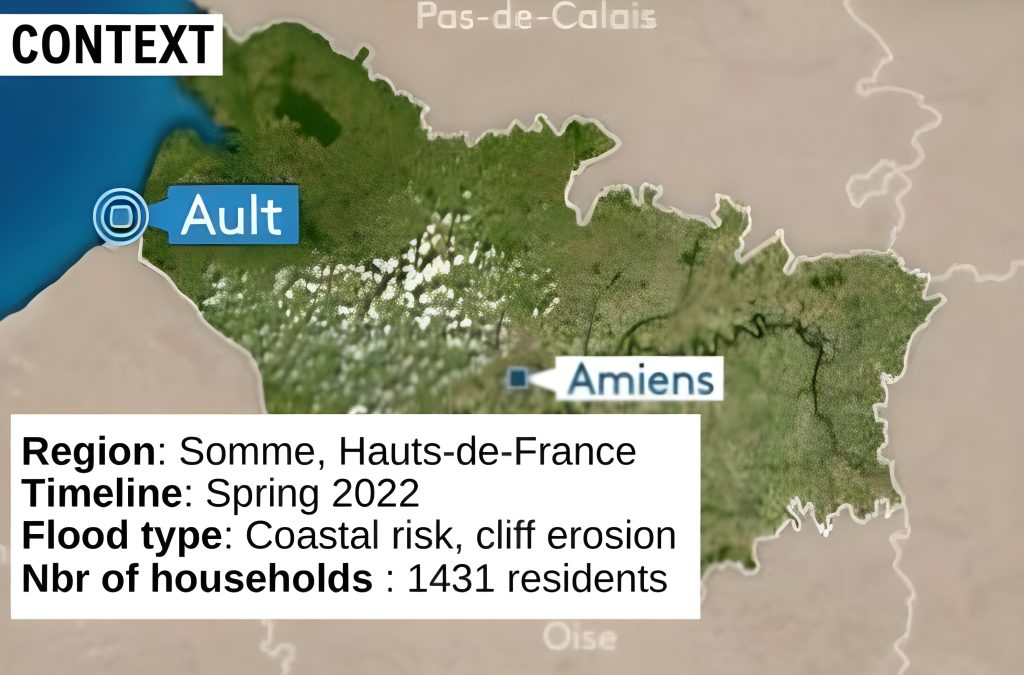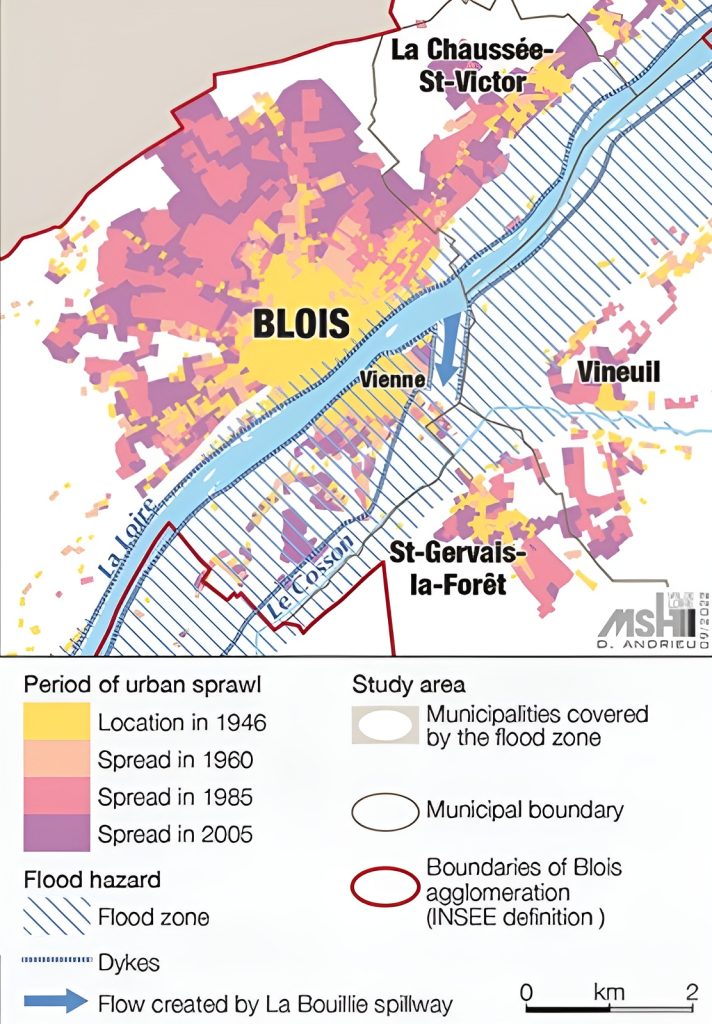You can easily download PDF summaries of the case studies for reference. These concise sheets offer a comprehensive overview of each case, providing a quick and accessible resource for your study needs. Download all summary sheets ⬇️
.
BELGIUM
Beerse
Case description
Beerse, a municipality with 18,261 inhabitants, is situated in a flood-prone area within the Scheldt basin. Recurrent flooding issues, primarily caused by heavy rainfall and river overflow from the Laak River, have prompted action. The flood control area, covering 1.57 hectares, was established in response to these challenges. It is a nature-based solution intended to mitigate the flood Risk of the Laak River. This strategic location was acquired in 2017 through a collaboration between the Province of Antwerp (75%) and the Municipality of Beerse (25%). The construction of the flood control area began in 2021, as part of the Interreg CO-ADAPT project.
Vulnerability
While the project demonstrated community involvement, questions about Justice and inclusivity arose. The organization’s approach did not comprehensively address socio-spatial inequalities, as residents were invited based on area proximity without assessing Vulnerability or flood Risk exposure. This raised concerns regarding inclusive participation, social impact, and Justice. To address these issues, a more targeted approach is recommended, identifying vulnerable communities or individuals at higher Risk of climate-related events. Strategies should be developed to mitigate negative social impacts, such as displacement prevention, addressing green gentrification, and protecting vulnerable populations.
Population involvement
The flood control area project in Beerse exemplifies a co-creation process involving various stakeholders. To ensure community involvement, citizens were actively engaged in the design process through a multi-faceted strategy. The Province of Antwerp initiated the process by surveying local residents to gauge their opinions on Climate change, flood risks, and the proposed flood control area. Generally, residents expressed support for the plan. Subsequently, two participation events were organized collaboratively by the Province and the Municipality of Beerse. During these events, residents had the opportunity to contribute to the design of the area. Their input emphasized not only addressing flood risks but also creating a space for nature experiences and recreation.
.
Geraardsbergen
Case description
Geraardsbergen is located in a hilly valley and crossed by the canalized and fast-flowing Dender river. Floods can occur due to sudden rises of the river after extreme rainfall events. As collective protective measures were already implemented but insufficient, the Flemish Environment Agency (VMM) launched an individual-scaled project in collaboration with the municipality. The idea was to give tailored advice about implementation possibilities of Property-Level Protections (PLP) to the population. The involvment into the project was up to the households. A subsidy covering up to 50% of PLP installation costs (max. up to €250) could be provided by the municipality, if asked.
Vulnerability
Even though information meetings were adressed to the whole population of Geraardsbergen, many households did not participate in the project, which might be due to the cost and the lack of awareness. Even though the city is characterised by a diverse set of social profiles, no measures were taken to ensure the participation of socially vulnerable people. While subsidies were offered, the households had to cover the full cost of PLP installation beforehand, which might not be feasible for all. While both a basic “cheap” and complete “expensive” plan of PLP implementation were proposed to households, those were not equally efficient. However, socioeconomic status do not determine the requirement for a high or low protection. Hence, there might be a a mismatch beween the need for PLP and the ability of people to implement them. Social Vulnerability is known to exist but is not effectively considered in flood Risk Mitigation. The involment of insurance companies into funding prevention measures and better collaboration between policy domains might be leads to adress socio-spatial Vulnerability.
Population involvement
In order to get the population to implement PLP as a flood Risk Mitigation measure, information meetings for all inhabitants were held. 83 households signed up to receive tailored advice from technical experts, 7 fully implemented the advised PLP measures and 18 partially. The preparatory phase of the project did not involve the population at any stage.
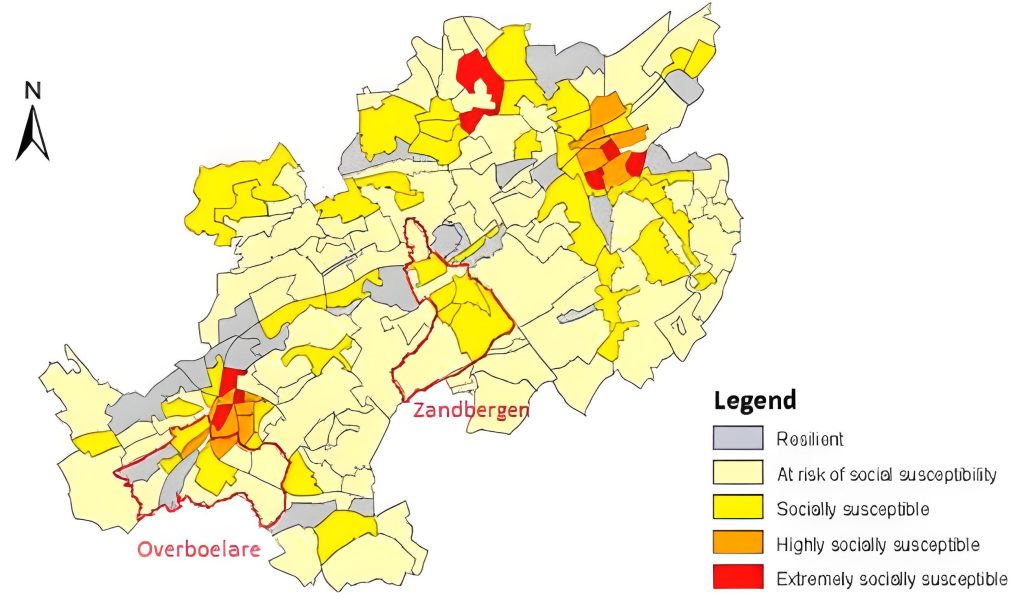
.
.
ENGLAND
The River Thames area
Case description
The River Thames area faces a “Very High Risk” of flooding from tidal, fluvial, surface water, sewer, and groundwater sources. Implemented strategies include the Jubilee River, the River Thames Scheme, channel fixes, gate installations, deepening specific areas, and utilizing lakes for water management.
Nature-based solutions involve creating new channels, enhancing habitats, and replacing agricultural land. Special projects like Slough Pathfinder and Sponge City contribute to flood relief efforts in the River Thames region.
Vulnerability
The project seeks to safeguard 11,000 homes and 1,600 businesses from flooding. In Slough, 5.2% receive social benefits, exceeding the national average of 3.7%. Despite overall prosperity, Windsor and Maidenhead have pockets of vulnerable populations, particularly among older residents. Slough, renowned for its cultural diversity, encompasses various ethnic and socio-economic groups that may face potential vulnerabilities, with a younger population indicating unique risks.
Population involvement
Current efforts in flood protection fall short. Various stakeholders, including the community, SBC, Buckinghamshire Council, Wildfowl and Wetlands Trust, and the National Flood Forum, contribute to the Flood and Coastal Resilience Innovation Fund. Engaging the community, the Slough Pathfinder, and Sponge City projects are integral. Partnership funding since 2011 has played a pivotal role in shaping flood Policies in the Lower Thames region.
.
West Sussex
Case description
Historically, the region of West Sussex has grappled with recurrent flooding episodes. Despite the implementation of various flood protection measures, their efficacy remains questionable. These measures encompass the drilling of holes for water drainage, imposing stringent restrictions on residential constructions, the installation of wooden structures engineered to amass sediment for enhanced protection, the utilization of rock armor composed of sizable boulders to fortify shorelines, and the erection of sea walls. Additionally, for addressing coastal erosion, strategies such as groins, riprap, and dykes have been deployed in an effort to mitigate the impacts over time.
Vulnerability
This region is marked by several inherent Risk factors, including the Arun River, abundant wetlands, as well as the susceptibility to Soakout and Dolines phenomena due to the soft and chalky geological composition. Furthermore, coastal erosion poses a significant threat, exacerbated by the generally flat terrain of West Sussex.
Contrastingly, the existence of the South Down Park and regulatory frameworks such as ZPS, ZSC, RAMSAR, and SSSI actively constrain urban expansion, concentrating populations within delimited areas. This, however, intensifies the pressure on regions already at Risk, amplifying the challenges associated with potential hazards.
Population involvement
Owners bear the responsibility for flood Risk management, regardless of financial or technical capabilities, as Governance is not a determining factor. The flexible powers in flood Risk management allow various stakeholders to act if inclined.
The study identifies a lack of Risk information from owners, revealing a gap in awareness. Additionally, it notes an unfair distribution of funds in Flood and Coastal Erosion Risk Management (FCERM).
.
FINLAND
The Helsinki metropolitan area
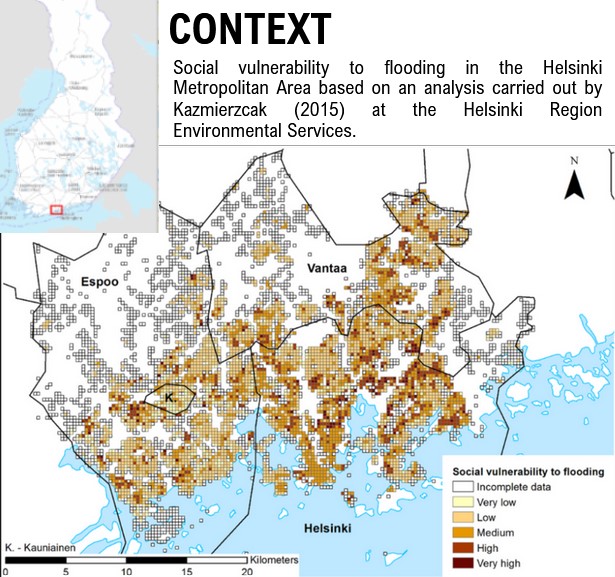
Vulnerability
In the Helsinki region, Vulnerability manifests in three ways:
- Diversity by socio-economic category: Given the region’s attractiveness, there exists a range of vulnerable populations requiring distinct adaptations during floods. This includes foreigners (constituting 11% of the population), individuals in precarious situations (such as 2,000 homeless people), and the elderly.
- Spatial Vulnerability: Notably, 3,200 residents inhabit flood-prone zones, introducing a spatial dimension that complicates effective flood management.
- Property Vulnerability: This form of Vulnerability considers potential damage to material assets, especially housing, industrial facilities, and underground infrastructures.
In this case study, current FRMPs predominantly concentrate on material aspects and property protection, neglecting specific vulnerable populations. Also, the knowledge gap reinforces Vulnerability in terms of preparedness and Adaptation.
Case description
Municipalities: Helsinki, Espoo, Vantaa, Kauniainen
Timeline: Spring 2022
Flood type: Coastal, fluvial & pluvial
The Helsinki metropolitan area is a coastal attractive urban area housing a great diversity of population and a high number of infrastructures. The coastal area of Helsinki and Espoo is considered one of the 5 coastal flood Risk areas in Finland, although the area has been little affected by flooding until today. In addition to this Risk of coastal flooding, there is an occasional Risk of fluvial flooding and a Risk of pluvial flooding in the HMA. The rise in this latter Risk, linked to Climate change, urban development and population growth, weighs on municipalities. This Risk is in fact managed at the local scale and horizontal coordination between multiple stakeholders is weaker than for the coastal flood management plan (regional scale). Besides, existing Flood Risk Management Plan (FRMPs) suffer from neglecting social aspects due to a variable vision of Vulnerability depending on the actors and political sectors, lack of citizen participation, inflexibility, and excessive technical focus, making them unsuitable for comprehensive flood Risk management. It is therefore necessary to propose new equitable forms of management that better respond to the diversity of populations, their capacities and their vulnerabilities.
Nature-based solutions involve creating new channels, enhancing habitats, and replacing agricultural land. Special projects like Slough Pathfinder and Sponge City contribute to flood relief efforts in the River Thames region.
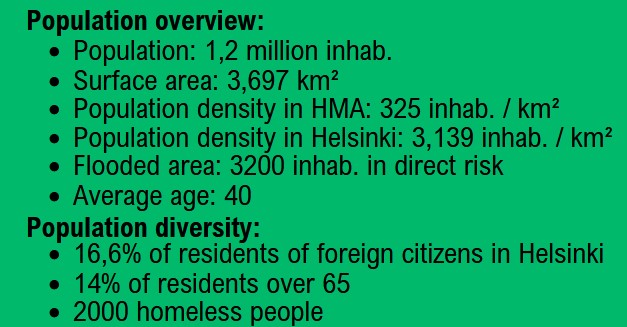
Involvement and obstacles
The authorities promote a participation network, when in reality many citizens and organizations are not aware of these participation possibilities. The result is a low participation, in addition to unknown effectiveness in taking citizens’ points of view into account in flood Risk management. Citizens’ low awareness of risks is mainly due to a lack of accessibility to information and high confidence in the authorities for flood Risk management. Citizens are then often not aware of their own responsibilities. This is in clear contradiction with the authorities’ objective of emphasizing the responsibility of citizens in personal preparation and residual Risk management. Furthermore, the effectiveness of the Risk management system is contested by certain organizations, particularly social ones, since the system does not seem to protect the most vulnerable people.
.
Kokemäenjoki
Case description
The Kokemäenjoki region in Finland offers a unique geographical context for flood Risk management. This area encompasses the extensive Kokemäenjoki river basin, known for its high level of regulation. Historically, the river management served several key purposes, including hydropower production, timber floating, flood defense, and water transportation. The regulation of the river has evolved significantly over the years, with practices such as dredging and terracing being prominent in the 1920s. This context extends into the 2016-2021 and 2022-2027 Flood Risk Management Plans (FRMPs), which continue to focus on mitigating significant flood risks in specific areas, notably Pori and Huittinen. These plans emphasize participatory development involving local and regional authorities, private stakeholders, and experts from various domains. The ELY Centre of Varsinais-Suomi coordinates these plans, with the ELY Centre of Pirkanmaa playing a crucial role in river management.
Vulnerability
Vulnerability in the Kokemäenjoki region is tied to financial losses from flooding, particularly impacting farmers who depend on the river economically. Socio-spatial inequalities worsen as different areas are disproportionately affected. Current flood Risk management, with its technocratic focus, perpetuates these disparities and lacks attention to Social Justice. Limited knowledge and awareness about Climate change and flooding further heighten Vulnerability. Public participation is restricted, especially for ordinary citizens lacking essential information. Local stakeholders advocate for better communication and increased participation to address flooding and socio-economic disparities.
Population involvement
The focus of the 2016-2021 and 2022-2027 FRMPs is the Kokemäenjoki river’s regulation in response to the escalating threat of winter floods. The central element of this flood Risk management project is the Säpilänniemi adjustment channel, designed to alleviate flood risks in the Huittinen region and across the entire river basin. However, this project has sparked concerns regarding its potential environmental impacts, particularly within the Natura 2000 areas. It is essential to recognize that flood Risk management in the Kokemäenjoki region is a complex network of both public and private stakeholders. Public authorities and entities, such as power companies, regional experts, municipalities, and rescue services, are extensively involved, contributing to the intricate nature of the flood Risk management landscape.
.
.
FRANCE
Ault
Case description
Ault is a rural commune located in the Somme region of Hauts-de-France, in northern France. As a small coastal town with a significant tourist presence, its economy revolves mainly around tourism, fishing, and coastal activities. Ault is confronted with natural risks, particularly coastal erosion attributed to rising sea levels and rainwater run-off from intensive agriculture upstream, posing additional erosion risks. Beyond its economic functions, Ault holds environmental and heritage significance. The town accommodates a diverse population, including long-term residents, newcomers, and tourists.
Vulnerability
The project seeks to safeguard 11,000 homes and 1,600 businesses from flooding. In Slough, 5.2% receive social benefits, exceeding the national average of 3.7%. Despite overall prosperity, Windsor and Maidenhead have pockets of vulnerable populations, particularly among older residents. Slough, renowned for its cultural diversity, encompasses various ethnic and socio-economic groups that may face potential vulnerabilities, with a younger population indicating unique risks.
Population involvement
The technical solutions proposed to address the Risk of coastal erosion in Ault encompass various measures:
– Reducing Agricultural Runoff: Initiatives are underway to decrease agricultural runoff by implementing soft hydraulic infrastructure in farm fields. The goal is to mitigate erosion caused by runoff.
– Regulating Urbanization: Authorities are working to regulate urbanization to prevent the construction of new properties on the seafront, protecting vulnerable areas from erosion. Additionally, plans are in place to relocate populations at Risk.
– Actions for Adaptation to Climate change: The document outlines actions to lessen the impact of erosion linked to Climate change, emphasizing the protection of coastal areas and critical infrastructures.
– Protection and Planning Measures: Various measures are proposed to enhance the stability of the shingle strip at Hable d’Ault and to improve protection in other seaside resorts.
These solutions integrate individual actions, collective initiatives, and natural approaches to minimize the impact of coastal erosion and ensure the long-term Resilience of the region against these risks. The level of resident involvement varies, with some actively participating in community actions, while others express concerns. A segment of the population denies the Risk and fails to recognize the danger. Means of participation include formal consultations, public statements, and access to administrative documents. A significant portion of the population has voiced complaints about a lack of communication from decision-makers, with residents feeling excluded from the project. Consequently, the project suffers from a communication deficit, posing a significant problem.
.
Blois
Case description
Blois, situated along the Loire, has used dykes and the Bouillie weir since the 17th century to prevent flooding. Since 1920, water levels have not exceeded 5 meters, preventing major damage. After the 1907 flood, La Bouillie underwent informal development, attracting a population mainly from the working classes and travellers. The area was considered marginal and at Risk of flooding, which kept land prices low, providing affordable housing for the working classes. However, in the 1990s, studies revealed the increased Risk of flooding in the town due to growing urbanisation and the obsolete weir. Since 2003, de-urbanisation measures have been taken in La Bouillie to restore the flood retention area and improve flood protection. Around 135 homes and 14 businesses have been relocated to new deferred development zones. La Bouillie, which has been de-urbanised, is envisaged as an opportunity for “regeneration”, but the project has encountered difficulties, transforming the area into a relegated zone. The area is now perceived as a buffer zone and occupied by people with alternative and marginal lifestyles such as “travellers”. Local decision-makers are seeking to make La Bouillie a symbol of change towards a sustainable city, but plans are currently at a standstill.
Vulnerability
The initial plan to relocate to La Bouillie, which focused on reducing the Risk of flooding, overlooked the social Vulnerability of local residents. A report called for these aspects to be taken into account, highlighting the high proportion of elderly and working-class people in the affected neighbourhoods. From 2005, a growing awareness of social Vulnerability emerged. A contact person was appointed to support residents, but efforts were slow and limited. Residents’ demands shifted from the cancellation of the “zone to be defended” to recognition and social support. The initial failure to take social vulnerabilities into account had negative consequences. The demands evolved towards recognition and social support, but the emergence of the concept of “landscape Vulnerability” during rehabilitation shifted the focus from social inequalities to the preservation of the landscape, illustrating the predominance of landscape considerations over social aspects.
Population involvement
The de-urbanisation of La Bouillie went through two phases of participation: firstly, the uninvited participation of former residents, who were faced with insufficient recognition and losses that were not taken into account. Their involvement was limited by a technical approach focused on safety and the perception that their proposals ran counter to flood Risk management Policies. Secondly, the establishment of formal participation mechanisms was crucial in legitimising the redevelopment project. However, these processes were symbolic, with limited impact on decisions. The lack of a culture of participation among local residents has contributed to a limited number of proposals, mainly used to calm relations between residents and the La Bouillie area.
.
Bibliography
Solaris Project, Case studies, 2023
.
Photo credit
Topio Haaja
Shalev Cohen
Benjamin Davies
Despina Galani




